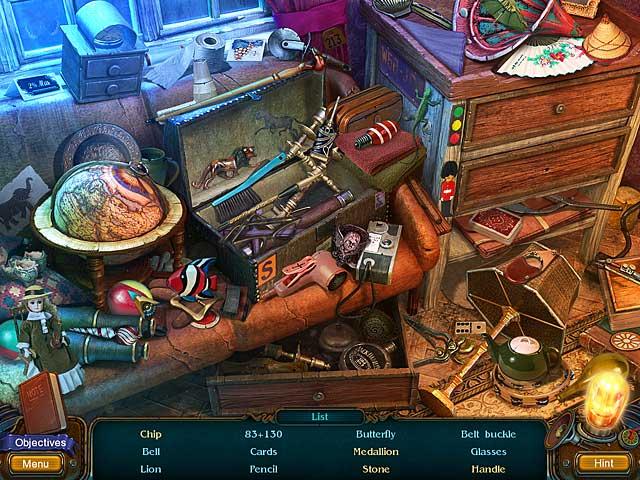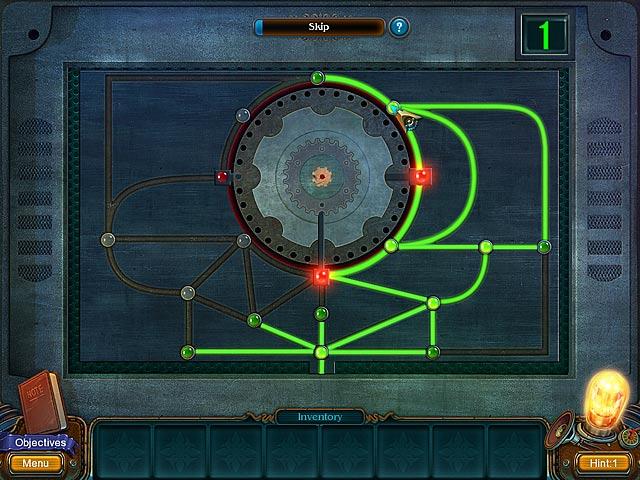- Wondering how to get Monopoly GO! free rolls? Well, you’ve come to the right place. In this guide, we provide you with a bunch of tips and tricks to get some free rolls for the hit new mobile game. We’ll …
Best Roblox Horror Games to Play Right Now – Updated Weekly
By Adele Wilson
Our Best Roblox Horror Games guide features the scariest and most creative experiences to play right now on the platform!The BEST Roblox Games of The Week – Games You Need To Play!
By Sho Roberts
Our feature shares our pick for the Best Roblox Games of the week! With our feature, we guarantee you'll find something new to play!All Grades in Type Soul – Each Race Explained
By Adele Wilson
Our All Grades in Type Soul guide lists every grade in the game for all races, including how to increase your grade quickly!
Howlville: The Dark Past Review
On first glance, Howlville: The Dark Secret is perfectly packaged to imitate its long line of Collector’s Edition ancestors who’ve thrilled audiences with their haunted houses, car crashes, and mysterious towns—or at least bombarded them into a numb acceptance of commercial standards. But from the title screen forward, Howlville distinguishes itself from the gloomy flock with a unique twist on the tried-and-true gameplay of hidden-object games. Instead of puzzles and hidden objects existing as separate entities; they’ve nested puzzles and tons of interaction into each hidden-object scenes, creating a very different pace and strategy for familiar mechanics.

Howlville breaks new ground with its mash-ups of puzzles and hidden-object scenes
On first glance, Howlville: The Dark Secret is perfectly packaged to imitate its long line of Collector’s Edition ancestors who’ve thrilled audiences with their haunted houses, car crashes, and mysterious towns—or at least bombarded them into a numb acceptance of commercial standards. But from the title screen forward, Howlville distinguishes itself from the gloomy flock with a unique twist on the tried-and-true gameplay of hidden-object games. Instead of puzzles and hidden objects existing as separate entities; they’ve nested puzzles and tons of interaction into each hidden-object scenes, creating a very different pace and strategy for familiar mechanics.
The game opens predictably for the genre—you’ve escaped a mental institution and you’re driving a stolen vehicle down some forbidden highway in search of an even more forbidden town. Rachel, the protagonist, reveals in an intimate tone that she is looking for her father, one of two scientists who disappeared in Howlville years ago while investigating an artifact. Eventually, the other scientist is established as the antagonist, but the how’s and why’s in Howlville are never quite fleshed out enough to matter. It reminded me of older adventure games where the programmers would hire a writer after the fact to “add some story” to the gameplay. And although the cutscenes were written with care, but the journal and in-game text could’ve benefited from some judicious editing.
Where N-Tri Studios’ first game really shines is in the gameplay—a major achievement just out of the chute. There are five chapters, each consisting of limited locations, so you’re only moving between three scenes at most, making it impossible to get lost. This approach works here because most of the needed items are garnered from intense hidden-object scenes that are puzzles in and of themselves.
Most scenes featured tiered levels of interaction: the first was moving objects to find other objects, the second was using an object in the scene to open/unlock another object to find other objects, and the third level was solving actual puzzles within the scene, such as a jigsaw or Rubik’s cube, to find an object. Each scene was a real challenge and I found myself scratching my head more than I would with some “real” adventure games.

Also impressive was the game’s use of monitor real estate. The HUD was clean and simple, and the in-game text was restricted to small text boxes that appeared when your pointer paused on a hotspot, allowing the eyes to give their full attention to the hand-drawn scenes. The music was about as aesthetically pleasing as a looped audio track can be, the sound effects appropriate, and the voice over, although scant, was well done.

But sometimes a player can have too much of a good thing. With all the layers of interaction, the hidden-object scenes become major undertakings that could last ten minutes or longer—especially if they contain two or more puzzles. (Be forewarned: the Skip button takes two minutes to charge.) Although most of the interactions were logical, some required leaps and bounds of faith that two such objects should go together. At times the length of time in a hidden-object scene detracted from the overall adventure and would’ve detracted from the story if there’d been one. And just as I’d breathe a sigh of relief that I’d completed all that puzzling, I’d find another active hidden-object scene in the same location!
As a standard edition, Howlville: The Dark Secret knocks it out of the park and deserves to be played on novelty factor alone. Whether you consider yourself a puzzle gamer or a hidden-object gamer, you’ll find plenty to love in N-Tri Studios’ gameplay mash up. And if you’re looking for a hardcore challenge, play the game on Expert mode—you’ll carry out thousands of interactions without a single glint!

The good

The bad
More articles...
Monopoly GO! Free Rolls – Links For Free Dice
By Glen Fox
Wondering how to get Monopoly GO! free rolls? Well, you’ve come to the right place. In this guide, we provide you with a bunch of tips and tricks to get some free rolls for the hit new mobile game. We’ll …Best Roblox Horror Games to Play Right Now – Updated Weekly
By Adele Wilson
Our Best Roblox Horror Games guide features the scariest and most creative experiences to play right now on the platform!The BEST Roblox Games of The Week – Games You Need To Play!
By Sho Roberts
Our feature shares our pick for the Best Roblox Games of the week! With our feature, we guarantee you'll find something new to play!All Grades in Type Soul – Each Race Explained
By Adele Wilson
Our All Grades in Type Soul guide lists every grade in the game for all races, including how to increase your grade quickly!







